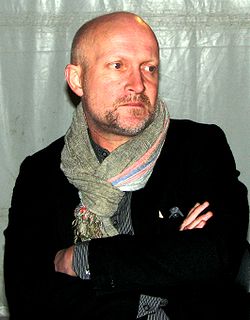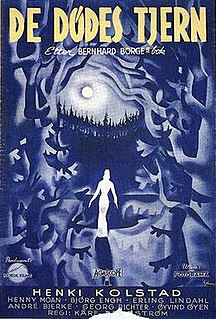Related Research Articles

Moss (help·info) is a coastal town and a municipality in Viken county, Norway. The administrative centre of the municipality is the town of Moss. The city of Moss was established as a municipality on 1 January 1838 and City in 1720. The rural municipality of Jeløy was merged with the city on 1 July 1943. The former municipality of Rygge was merged into it on January 1, 2020.

Leif Erikson, Leiv Eiriksson, or Leif Ericson, also known as Leif the Lucky, was a Norse explorer who is thought to have been the first European to have set foot on continental North America, approximately half a millennium before Christopher Columbus. According to the sagas of Icelanders, he established a Norse settlement at Vinland, which is usually interpreted as being coastal North America. There is ongoing speculation that the settlement made by Leif and his crew corresponds to the remains of a Norse settlement found in Newfoundland, Canada, called L'Anse aux Meadows, which was occupied 1,000 years ago.

Østfold[ˈœ̂stfɔɫ](listen) is a traditional region, a former county and a current electoral district in southeastern Norway. It borders Akershus and southwestern Sweden, while Buskerud and Vestfold are on the other side of Oslofjord. The county's administrative seat was Sarpsborg. The county controversially became part of the newly established Viken County on 1 January 2020.

Dirch Hartvig Passer was a celebrated Danish actor. He was greatly renowned for his improvisational skills and, with a filmography comprising 90 movies, one of Denmark's most prolific actors. His life is depicted in the Danish semi-biographical film A Funny Man directed by Martin Zandvliet.

Lars Saabye Christensen is a Norwegian/Danish author.

The naval Battle of Dynekilen took place on 8 July 1716 during the Great Northern War between a Dano-Norwegian fleet under Peter Tordenskjold and a Swedish fleet under Olof Strömstierna. The battle resulted in a Dano-Norwegian victory.
The culture of Norway is closely linked to the country's history and geography. The unique Norwegian farm culture, sustained to this day, has resulted not only from scarce resources and a harsh climate but also from ancient property laws. In the 19th century, it brought about a strong romantic nationalistic movement, which is still visible in the Norwegian language and media. In the 19th century, Norwegian culture blossomed as efforts continued to achieve an independent identity in the areas of literature, art and music. This continues today in the performing arts and as a result of government support for exhibitions, cultural projects and artwork.

The Viking is a 1928 American drama film. It was the first feature-length Technicolor film that featured a soundtrack, and it was the first film made in Technicolor's Process 3. It stars Pauline Starke, Donald Crisp, and LeRoy Mason. The film is loosely based on the 1902 novel The Thrall of Leif the Lucky by Ottilie A. Liljencrantz. The Viking was directed by Roy William Neill.

Grœnlendinga saga is one of the sagas of Icelanders. Like the Saga of Erik the Red, it is one of the two main sources on the Norse colonization of North America. The saga recounts events that purportedly happened around 1000 and is preserved only in the late 14th century Flateyjarbók manuscript.
Events in the year 1996 in Norway.

The Brage Prize is a Norwegian literature prize that is awarded annually by the Norwegian Book Prize foundation. The prize recognizes recently published Norwegian literature.

Lake of the Dead is a 1958 Norwegian mystery horror film directed by Kåre Bergstrøm. The film stars Henki Kolstad, Henny Moan and Georg Richter.
The Master and His Servants is a 1959 Norwegian drama film directed by Arne Skouen. The film is based on a 1955 play by Axel Kielland, who also plays a minor character in the film. The play and the film is based on true events in Sweden. The Master and his Servants was entered into the 9th Berlin International Film Festival.

Sæbjørn Buttedahl was a Norwegian stage and film actor who later found prominence as a sculptor.
Fant is a Norwegian film from 1937 based on Gabriel Scott's 1928 novel of the same name. The film was directed by Tancred Ibsen, who was also wrote the script for the film. The film premiered on December 26, 1937 at the Eldorado Cinema in Oslo.
Hans Nielsen Hauge is a Norwegian film from 1961 direected by Kåre Bergstrøm. It is a dramatization of the life of the lay minister Hans Nielsen Hauge (1771–1824). The film received a lukewarm reception from Verdens Gang's reviewer, who gave it three out of six stars.
Journey to the Sea is a Norwegian drama film from 1966 directed by Arne Skouen, who was also the screenwriter. Skouen's daughter Synne Skouen played Pinne, a teenage girl wanted by the authorities.
Om Tilla is a Norwegian drama film from 1963 directed by Arne Skouen. Skouen wrote the screenplay, which was based on his 1959 novel Bare om barn. It contained a series of articles from the newspaper Verdens Gang, in which Skouen pointed out that children with intellectual disabilities and children with behavioral difficulties did not receive sufficient financial support or professional help.
Selkvinnen is a Norwegian film from 1953. It was directed by Lauritz Falk and Per Jonson; Falk himself played the lead role in the film. The film script was written by Leif Sinding. Gunnar Sønstevold composed the music for the film.
References
- ↑ "Lokaltrafikkhistorisk Forenings vognpark". vognparksporveismuseet.atwebpages.com. Retrieved 17 July 2017.
- ↑ "Altibox TV Overalt". chill.altibox.no. Archived from the original on 12 August 2014. Retrieved 17 July 2017.